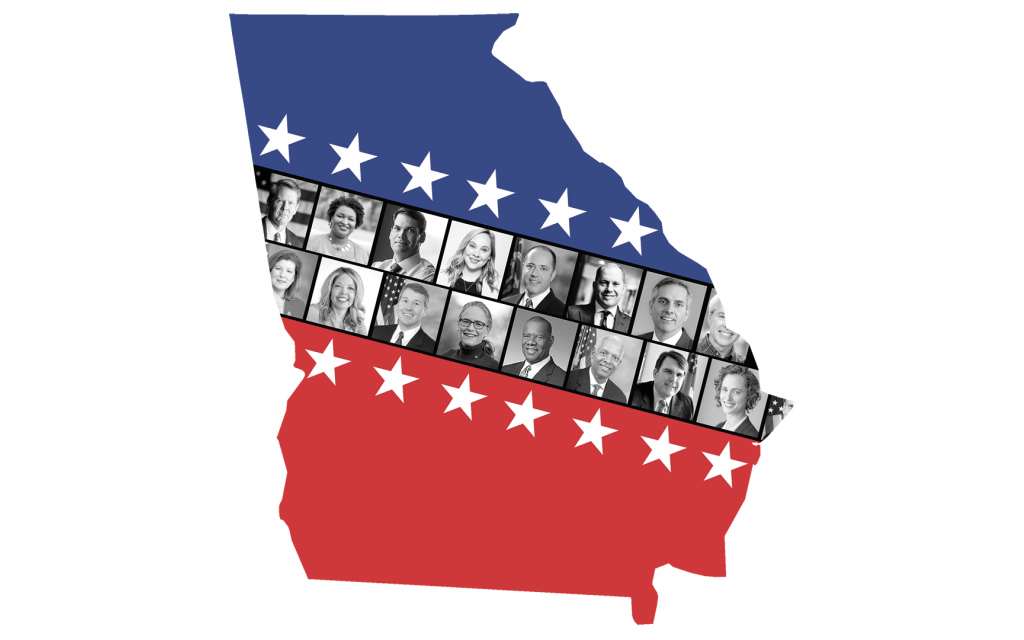Potential Democrat, Female Candidates Have Nation Watching Georgia
In what may be a “year of the woman,” 20 women have run this year for Georgia state executive offices and Congress, with 11 advancing from the primary to the general election.
The pundits – people who prognosticate on politics for pay – think that Georgia, at present bright Republican red, might develop a shade of purple, by mixing in Democratic blue.
Georgia is garnering national attention this election cycle, in large measure because of the gubernatorial contest between Georgia’s current Secretary of State, Republican Brian Kemp, and Democrat Stacey Abrams, former minority leader in the state House. That race is rated a toss-up.
Georgia requires a runoff (on Dec. 4) if no candidate in a general election receives a majority of the vote. This could be an issue in the gubernatorial and secretary of state races, in which there is a Libertarian party candidate in addition to a Democrat and a Republican.
Get The AJT Newsletter by email and never miss our top stories Free Sign Up
In an Atlanta Journal-Constitution poll conducted in September, 25 percent of respondents said the economy/jobs was their top issue, followed by health care, 16 percent; public schools, 16 percent; immigration, 10 percent; and gun laws, 8 percent.
In what may be a “year of the woman,” 20 women have run this year for Georgia state executive offices and Congress, with 11 advancing from the primary to the general election. Additionally, 121 women (91 Democrats and 30 Republicans) have sought state legislative seats – up from 75 in 2016.
President Donald Trump’s standing is one fault line in the state’s politics.
Trump won Georgia’s 16 Electoral College votes in 2016, garnering 50.4 percent of the state’s vote, compared with 45.3 percent for Democrat Hillary Clinton.
An AJC/WSB-TV poll released Oct. 11 put disapproval of Trump’s job performance at 50 percent, with his approval at 46.6 percent, up 4 percentage points from early September.

Along with the prospect of Abrams becoming the first woman or African-American to be elected governor, the state’s Democrats are hoping that a “blue wave” will wash ashore a couple of other history-making results.
If Democrat Sarah Riggs Amico defeats Republican Geoff Duncan, she will become the state’s first female lieutenant governor.
If Democrat Lindy Miller defeats Republican incumbent Chuck Eaton, she will be the first Jewish woman to win a statewide vote, and thereby represent District 3 on the state’s utility-regulating Public Service Commission.
Major change is less likely under the Gold Dome, where Republicans currently hold 115 out of 180 seats in the state House and 37 out of 56 in the Senate.
Meanwhile, the races in the 6th and 7th Congressional districts are the only ones in Georgia’s 14 congressional districts deemed competitive.
Turnout in so-called “off-year” elections tends to be substantially less than when electing a president. For example, 76.5 percent of registered voters in Georgia cast ballots in 2016, but only 50 percent did so in 2014.
Jewish voters can wield influence beyond their numbers at the polls, given their habit of voting at a much higher rate than the population at large (upwards of 80 percent in presidential elections).
Jews make up an estimated 1.3 percent of Georgians, some 130,000-plus residents. If, in keeping with the state in general, three-quarters are age 18 or older, that would be about 101,000 Jews of voting age. If all were registered and 80 percent turned out to vote (granted, that may be unlikely), that would be more than 81,000 Jewish Georgians casting ballots. Based on the 2014 off-year turnout in Georgia, that would be about 3.1 percent of voters.





comments